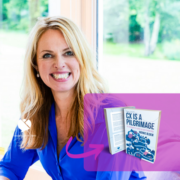Crash course in human emotions
Emotions you really need to recognize when interacting with customers and employees. For all in customer experience, marketing, sales and operations.
The last couple of days my feelings are deeper than a month ago. I feel sad when I see awful images on ICU's and when I hear stories of loss. I feel disgust of companies that just keep sending their stupid sales newsletters through email, like nothing is going on. I experienced fear while my fiance had corona. I experienced anger seeing people that were just out in the streets, pretending the world was still normal and they could go to the beach or the park, putting lives in danger. But also, I experience joy while watching funny videos, that I receive through WhatsApp. I felt relieved my fiance recovered from corona. I felt surprised when receiving a thoughtful handwritten card with caring words in my mailbox.
Somehow, my emotions are deeper. Are more on the surface and are more intense. Which actually not only happens in my emotional world. It also happens also in yours, your family, community, actually in the world of most humans that are now affected by corona. This requires that we, Customer Experience Professionals, people working in marketing, sales and operations, need to be aware of the intensity of emotions of our employees and customers.
We definitely need to recognize and learn how to deal with emotions to help our customers and employees in the best way.
To help you out to understand emotions and the range of emotions, I share the knowledge by Professor Robert Plutchick and his wheel of emotions. If you understand this, please use it in scripts, customer journeys, emails, campaigns, conversations, and probably many more situations. So, here we go....
The basics:
Plutchik considers there are eight primary emotions; anger, fear, sadness, disgust, surprise, anticipaation, trust and joy. Plutchik argues for the primacy of these emotions by showing each to be the trigger of behaviour with high survival value, such as the way fear inspires the fight or flight response (info wikipedia).
How are the eight emotions related:
As you can see in the emotion wheel, each primary emotion has an opposite; joy is the opposite of sadness, trust is the opposite of distrust, fear the opposite of anger, surprise is the opposite of anticipation
The emotions in between the eight basic emotions, are the combined emotions. So disgust plus anger, gives the emotion contempt. Or fear plus surprise, gives awe. As emotions are complex, this way of looking at emotions helps to understand where these emotions come from.
The intensity of emotions:
The emotions I feel in these times of corona, feel deeper, like they are more intense. That is what Plutchik visualizes by the brightness of the colors in the wheel. The deeper the color, the more intense the motion is felt. When looking in the yellow column, the lightest emotion is serenity, more deeper is joy and the emotion in the most intense way is ecstasy.
Plutchik's wheel of emotions provides a perfect framework for understanding emotions
Now what?
It is important for all of us, to dive deeper in emotions of our customers and employees. To understand what the emotions are they are experiencing. Because these emotions need to be taken seriously. As I learned on a mindfulness course, you can compare not taking your emotions seriously, like pushing a cork underwater deeper and deeper. In the end it will pop out faster than ever before. Remember my example of the company that just keeps sending me sales-oriented newsletters, that are in my view, not appropriate right now. I canceled their newsletter. As I explained the reason for my un-subscription, they reacted; "Thank you so much. We value your opinion" Which I know for certain is a standardized email, so they are not listening at all. Now I am really done with them, since I will remember this for a long time.
Three suggestions how to apply the knowledge of emotions:
1. In customer contact – Acknowledge emotions when you have conversations with customers. Or train your staff to acknowledge emotions. It is proven, that the more you ignore the more red/purple emotions, the more they will intensify. This also means that in these uncertain times, customer contact with regards to health, money and other uncertain topics, will take more time. So take that into account in average handle times.
2. In customer / employee communication – Examine what your customer or employee is feeling and experiencing right know. Describe and acknowledge these situations and emotions, so people will read/watch on. Make sure that when you show videos, that the person in the video, is honest and also shows emotion. A best practice, is the video of Arne Sorenson CEO of Marriott, who explains the impact of covid-19 on Marriott for the associates.
3. In Customer journey mapping sessions – Too often I see that Happy, Neutral and Unhappy are used to map emotions. You just read there are many more emotions and it will help you to diversify the emotions of customers. What are they really feeling right now and also, how do you want them to feel in the To-Be journey. Use the wheel in your design thinking processes. This more detailed wheel with described emotions might come in handy. It shows the diversity of emotions. Praise given to Danny Peters that uses this wheel in his customer journey mapping teaching sessions.
I hope this knowledge helps you to understand your customers and employees emotions better. Maybe even the emotions of yourself and the people close to you. Our emotions have deepened, maybe we even feel different emotions. So it is now even more important to be aware and pay the right attention.
Let's get active; Share your thoughts in the comments.
Was this article useful? Please let me know. And even more important, how could you apply or have your applied this knowledge? Please share in the comments. Let's grow our understanding of emotions and the impact on our CX work even more. Thank you and since it is important for all of us, a little personal note; stay safe.
Subscribe to her weekly CX Greetz.
*****
Nienke Bloem is often called the Customer Experience speaker in the blue dress.
She's a global CX thought leader, educator and a global keynote speaker who inspires audiences with best practices and proven methodologies. She leads a speaking practice, a CX game company and a training business; she breathes Customer Experiences and is author of two CX books.
Her two-day Customer Experience Masterclass is known as the best program to prepare for your CCXP and she is the go-to person for CX leaders who want to advance their leadership and bring direct results from their Customer Experience transformation programs. Since 2020, she hosts a CX Leadership Masterminds program and helps leaders spice up their leadership and deliver an engaging CX Story including a solid CX Strategy. Besides, she is a modern-day pilgrim and found the parallel with leading customer centric transformations.
With her over 20 years of corporate experience, she speaks the business language. Her keynotes and education programs in Customer Experience are inspiring and hands-on. She is one of the few Recognized Training Partners of the CXPA and it is her mission to Make Customer Experience Work and help you deliver business results.






